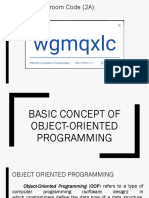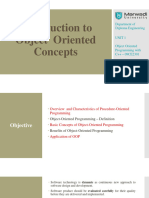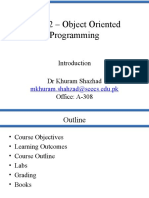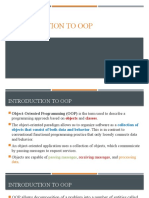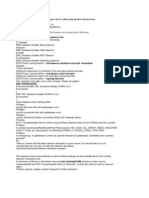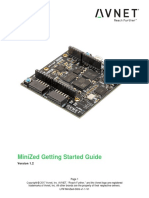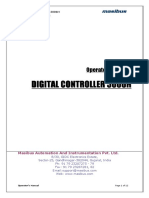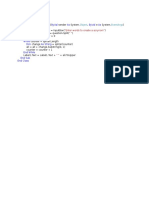0% found this document useful (0 votes)
7 views48 pagesChapter 1 Introduction - To - Object - Oriented
The document outlines a course on Object-Oriented Programming (OOP) covering fundamental concepts such as classes, objects, encapsulation, inheritance, and polymorphism, along with practical Java programming techniques. It includes a detailed course structure with chapters on advanced OOP concepts, exception handling, GUI development, and file handling. The document also lists assessment criteria and references for further reading.
Uploaded by
ahazinsightsCopyright
© © All Rights Reserved
We take content rights seriously. If you suspect this is your content, claim it here.
Available Formats
Download as PPTX, PDF, TXT or read online on Scribd
0% found this document useful (0 votes)
7 views48 pagesChapter 1 Introduction - To - Object - Oriented
The document outlines a course on Object-Oriented Programming (OOP) covering fundamental concepts such as classes, objects, encapsulation, inheritance, and polymorphism, along with practical Java programming techniques. It includes a detailed course structure with chapters on advanced OOP concepts, exception handling, GUI development, and file handling. The document also lists assessment criteria and references for further reading.
Uploaded by
ahazinsightsCopyright
© © All Rights Reserved
We take content rights seriously. If you suspect this is your content, claim it here.
Available Formats
Download as PPTX, PDF, TXT or read online on Scribd
/ 48



